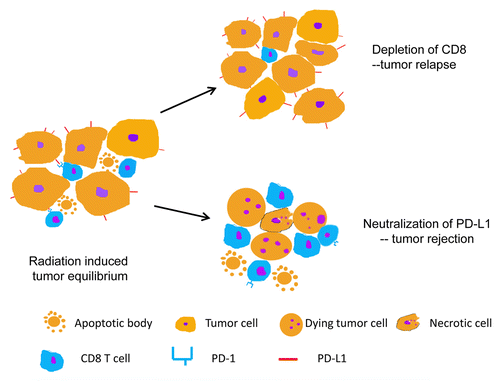Figures & data
Figure 1. Shifting the equilibrium between the proliferation and T lymphocyte-mediated killing of malignant cells in radiation-stabilized tumors. Within irradiated tumors, an equilibrium is established between proliferating cancer cells and the cytotoxic activity of tumor-specific T lymphocytes. When the equilibrium is compromised by alterations that affect the cytotoxic potential of T cells, neoplastic lesions relapse. Conversely, the neutralization of immunosuppressive molecules such as programmed cell death ligand 1 (PD-L1) tilts the balance toward tumor rejection.
